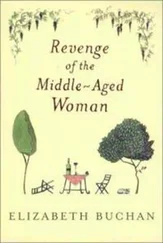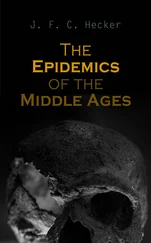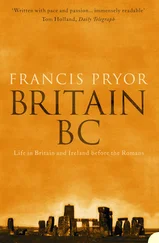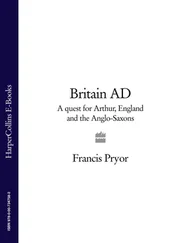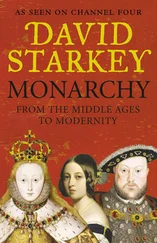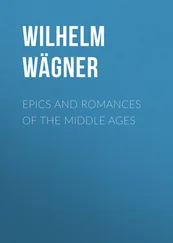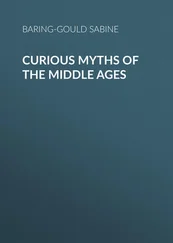BRITAIN IN THE MIDDLE AGES
An Archaeological History
FRANCIS PRYOR

This book is dedicated to the memory of
DR CHRIS SALISBURY
friend, doctor and archaeologist
Cover
Title Page
Dedication
Table : Dates and Periods
Introduction : Archaeology and the Medieval Period
PART I: On Britons, Saxons and Vikings (650–1066)
1 The North/South Divide of the Middle Saxon Period
2 Enter the Vikings
3 Rural Life in Late Saxon Times
4 Urban Life in Late Saxon Times
PART II: The Middle Ages (1066–1550)
5 Urban Life in the Middle Ages
6 Rural Life in the Middle Ages
7 Trade, Industry and Security
8 The End of the Middle Ages?
Acknowledgements
P.S. Ideas, Interviews & Features …
About the Author
Excavating the Past: Francis Pryor talks to Louise Tucker
Life at a Glance
Top Ten History/Archaeology Books
A Writer’s Life
About the Book
Archaeology and History in Times of Change
Read on
Have You Read?
Find Out More
Index
About the Author
Notes
Praise
Also by the Author
Copyright
About the Publisher
| Archaeological Period* |
Dates (AD) |
Defining or transitional events |
Notes |
| Roman |
43–410 |
Withdrawal of last Roman troops from Britain c .409 |
|
| ‘Sub-Roman’ or Post-Roman |
410–50 |
|
This is sometimes Post-Roman included in the Early Saxon period |
| ‘Early Medieval’ |
c . 410–1066 |
|
A term generally used to describe pre-Norman times |
| Early Saxon |
450–650 |
|
Previously known as Pagan Saxon |
| Middle Saxon |
650–850 |
|
|
| Late Saxon |
850–1066 |
Norman Conquest (Battle of Hastings 1066) |
|
| ‘Saxo-Norman’ |
850–1150 |
|
A general descriptive term |
| Middle Ages (or ‘Later Medieval’) |
1066–1550 |
These may be subdivided thus: |
|
| Early Middle Ages |
1066–1350 |
1348–49 first wave of Black Death |
|
| Later Middle Ages |
1350–1550 |
Dissolution of the monasteries 1536–40. The Reformation (Church of England legally established 1559) |
Sometimes referred to as the ‘Transitional Period’ |
| Post-Medieval |
1550–present |
|
|
*Terms placed in quotes are used in a general sense. They are not archaeological periods sensu stricto .
INTRODUCTION
Archaeology and the Medieval Period
I found the archaeological exploration involved in the writing of my previous book, Britain AD, so fascinating that I decided I had to carry the story forward in time. By comparison with Britain AD, I have fewer axes to grind in this book. This is probably because hypothetical mass-migration and invasion are not contentious issues after the three centuries that followed the Roman withdrawal of AD 410.
In this book I want to take an archaeological look at medieval Britain. The word ‘medieval’ can be taken to mean many things. Here I will use it as a chronological label, which for present purposes begins around AD 650, the end of the period known to archaeologists as the Early Saxon. The finish date is harder to pin down, and later we will see that there are good reasons for this, but here I will follow most archaeological opinion by selecting the mid-sixteenth century, say 1550, and the death of Henry VIII (1547).
This is not a textbook, nor is it a book of social or political history. 1 If you are looking for an authoritative account of the Tudors, the Plantagenets or the Peasants’ Revolt, then this is not it. This will be what used to be called a ‘narrative history’ – except that there is more here about archaeology than about history. I have made greater efforts to explain fields and hedges, waterfronts and trade than the achievements of individual rulers. Another way of describing a narrative account is to see it as a diary or journal of the author’s own exploration of a particular subject. That, I think, is closer to what I have attempted to do.
Being a prehistorian of the Neolithic, Bronze and Iron Ages, I am most familiar with the sites and objects of the last four millennia BC, as revealed by excavation. This experience gives me an unusual perspective on medieval times. As we will see shortly, I tend to view the past in the long term. I am more concerned with the processes of social and political change than with a detailed chronicle of the events that marked the progress of those changes. To use a phrase that is currently popular, this book is an attempt to write a sort of ‘joined up’ archaeology, where the changes seen in the ground can be related to their causes in the ancient world. This approach is perhaps easier for historians, who are good at identifying key events, their causes and consequences. Archaeologists, on the other hand, have found that the techniques available to them make the identification of historical events a problem.
One example will suffice. We know for a fact that Boudica, the rebellious Queen of the Iceni, nearly threw the occupying Roman troops out of Britain during her uprising in AD 60 and 61. In the course of that revolt her forces set fire to parts of towns in eastern England. Accordingly, when archaeologists working in that region find evidence for burning around the middle of the first century AD, they often attribute it to the Boudican revolt. In that way the ‘evidence’ for large-scale destruction is increasing every year. But in antiquity, just as today, fires are not always started deliberately. Very often they happen by accident, and the archaeologist is presented with the near-impossible task of differentiating between Boudica and, say, the results of a bakery fire. To make matters worse, nowadays the press are always on the prowl for news stories, and fresh evidence for the heroic warrior queen’s prowess always makes excellent copy.
This inability to tie down specific historical events has led archaeologists to turn their attention to the longer-term processes that lay behind the development of society in various parts of the world. Today the profession is branching out. There is a proliferation of fresh approaches to the past. Some, the so-called culture-historicists, stay with historical reconstruction. Others (processualists) prefer to work with problems to do with social process; their way of working is heavily influenced by anthropology. But there are many other ways of ‘doing’ archaeology today, ranging from Marxist to cognitive to neo-structuralists and various strands of post-processualists, who take their ultimate inspiration from post-modern philosophers such as Derrida. 2 Some of their ideas, deconstruction for example, have proved very useful. I believe this diversity of approach gives our discipline strength and resilience. My own approach is a hybrid of at least three of these methods – I think.
Читать дальше



